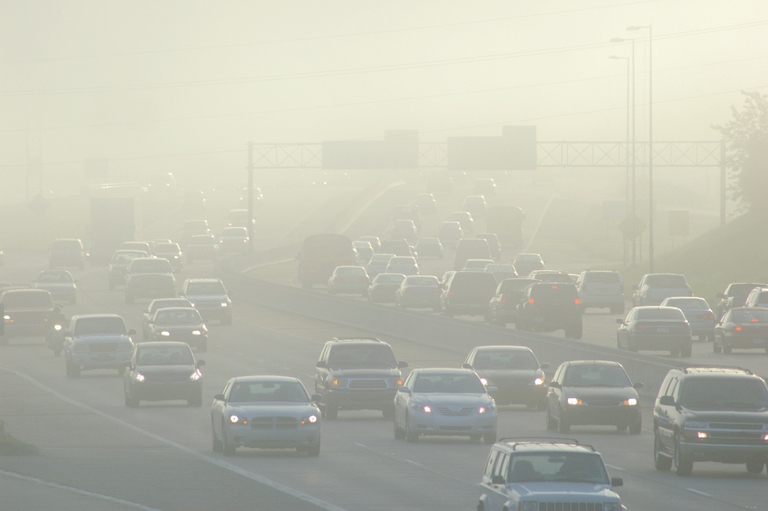
Sharon Lavigne, one of the six winners of the 2021 Goldman Environmental Prize, is fighting to protect her community from plastics corporations.
People living near major roads and busy traffic are more at risk of developing dementia, according to a report analysing more than 6 million people.
Emerging evidence suggests that living near major roads and busy traffic might adversely affect cognition and increases the risk of developing dementia, according to the findings of a study published in UK medical journal The Lancet. The research aimed to investigate the association between residential proximity to major roadways and the incidence of three neurological diseases: dementia, Parkinson’s and multiple sclerosis.
“Living close to heavy traffic was associated with a higher incidence of dementia, but not with Parkinson’s disease or multiple sclerosis,” the report says.
Dementia is a syndrome causing deterioration in cognitive functions. It affects memory, thinking, orientation, comprehension, calculation, learning capacity, language and judgement. It, however, doesn’t affect consciousness, according to the World Health Organisation (WHO).
The research’s findings are based on analysis of records of nearly 6.6 million residents of the Canadian province of Ontario between 20 and 85 years of age. Samples were divided into two population-based cohorts including all adults aged 20 to 50 years and those aged 55 to 85 years.
People who lived within 50 metres of roads with busy traffic had a 7 percent higher risk of developing dementia compared to those who lived between 200 and 300 metres from such roadways, found the study conducted by research organisation Public Health Ontario (PHO).
With 243,611 cases of dementia identified between 2001 and 2012 the mapping of residents’ proximity to major roads was done using postal codes. Compared to people who lived within 50 metres of busy roads, the risk of developing dementia was reduced by nearly 3 percent for those at a distance of between 50 and 100 metres, and nearly 5 percent for people within 101 to 200 metres.
“These people have dual exposure to noise and air pollution,” said Doctor Viyatprajna Acharya, professor of Biochemistry at the Bhubaneswar-based SUM Hospital in India. “Noise causes neural irritability, which may lead to neurological disorders. A mixture of pollutants in the air leads to chronic respiratory tract infection as well as oxidant generation in the body. This, in the long run, may affect different organ systems, the brain and nervous system, causing dementia. The study by PHO researchers has reconfirmed this”.
“Population growth and rapid urbanisation place more and more urban dwellers close to roads with heavy traffic. Exposure of these people to noise and bad quality air could pose a large public health burden,” she added.
Worldwide, the number of people with dementia remained 47.5 million in 2015, according to WHO estimates. Projections expect the number to increase to 75.6 million by 2030 and more than triple this by 2050.
“Developing nations like India, which plans to convert 60 urban places into smart cities, should include traffic management as a major component in urban planning. The country needs to bring strong regulations to control vehicular movements and pollution in its cities,” Acharya emphasised.
The study’s authors, in fact, issued a warning call to world governments for more and stronger action to check air pollution to reduce health risks. Given that population influx to urban areas keeps increasing, scientists also hope that the results will motivate town and city planners to take traffic conditions and air pollution into account when planning for development.
Siamo anche su WhatsApp. Segui il canale ufficiale LifeGate per restare aggiornata, aggiornato sulle ultime notizie e sulle nostre attività.
![]()
Quest'opera è distribuita con Licenza Creative Commons Attribuzione - Non commerciale - Non opere derivate 4.0 Internazionale.
Sharon Lavigne, one of the six winners of the 2021 Goldman Environmental Prize, is fighting to protect her community from plastics corporations.
Plastic pollution is airborne too. Microplastics are being carried across continents by the wind, as a recent study reveals.
Levels of particulates in New Delhi in 2020 were once again far above safety thresholds, with extremely serious health consequences for its citizens.
A major oil spill in the Ecuadorian Amazon in April has left the Coca River polluted. The indigenous Kichwa are suing the companies whose pipelines broke.
Molecules that eat up plastic waste, including PET bottles, may soon become widely used as scientists leap ahead in developing new super enzymes.
In Italy’s Land of Fires between Naples and Caserta, activists like Carmen Medaglia are fighting to promote new ways of managing waste.
Toxic substances in Kamchatka’s waters have killed 95% of marine fauna and caused health problems for surfers. The causes, however, are still unknown.
A Magellanic penguin was found lifeless on a Brazilian beach: in its stomach, an N95 face mask. Researchers believe the animal died from ingesting it.
The drop in air pollution during worldwide lockdowns helped prevent thousands of premature deaths. But the situation is returning to pre-crisis levels.










